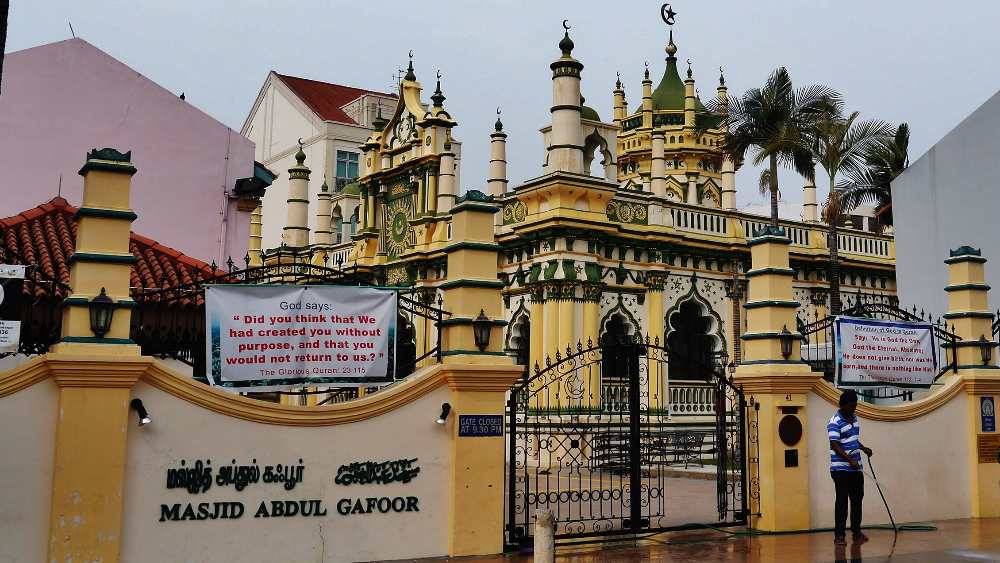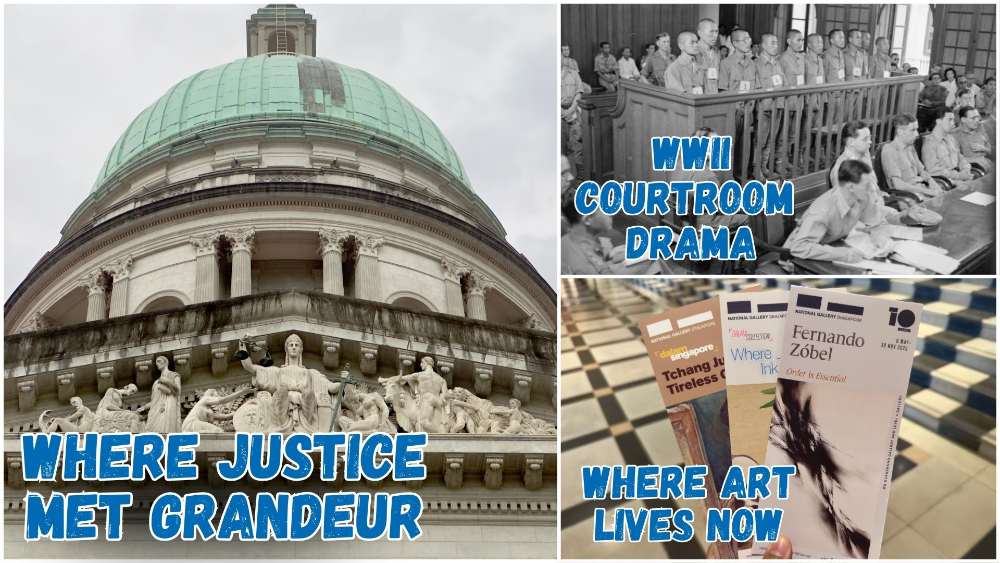Moorish Arches And Starry Ceilings Make This National Monument Feel Like A Fairytale
What is a National Monument? Who gazettes them? How many national monuments are there in Singapore? To date, the Preservation of Sites and Monuments, a division of National Heritage Board, has identified and gazetted 75 buildings, structures and sites of national significance as an integral part of Singapore’s built heritage.
And we're here to tell you all about them - one National Monument at a time!
You've probably passed by or stepped into more than a few of them without realising they were National Monuments: Al-Abrar Mosque, Asian Civilisations Museum, the Civilian War Memorial, Saint Andrew's Cathedral, the Esplanade Park Memorials, Fort Siloso on Sentosa - no need to plan an itinerary for friends visiting from overseas; just show them this article ✌️
In this edition, we take a closer look at Abdul Gafoor Mosque, a building designed in an eclectic blend of Saracenic and Neoclassical elements.
📍 Location
Abdul Gafoor Mosque was the 18th building to be gazetted as a National Monument, and is located near other National Monuments such as Church of Our Lady of Lourdes and Sultan Mosque. The MRT stations nearest to it are Rochor, Jalan Besar, Bugis and Little India.
📅 Significant dates
Dates built:
- 1859: Dunlop Street Mosque was built
- 1907: Construction of the new mosque, today's Abdul Gafoor Mosque, began
- 1910: Dunlop Street Mosque was torn down, and the new mosque was completed
Milestones:
- 1881: The Dunlop Street Mosque Wakaf (Endowment) was set up
- 1998: A long forgotten basement was rediscovered
- 2000-16 May 2003: Extensive restoration works were undertaken
- Oct 2003: Abdul Gafoor Mosque received the Architectural Heritage Award from the Urban Redevelopment Authority
Date gazetted: 5 Jul 1979
📜 History
The roots of Abdul Gafoor Mosque can be traced back to the mid-1800s, with the construction of Al-Abrar Mosque (which was also known as Dunlop Street Mosque; this should not be confused with Al-Abrar Mosque at Telok Ayer street) in 1859. The Dunlop Street Mosque was a simple wooden structure with a tiled roof, and made of brick and chunam (a cement or plaster used in India).
It catered to the religious needs of Tamil Muslim immigrants from South India trading in Kampong Kapor, and Baweanese syces (horse groomers) and horse trainers working at the former Farrer Park racecourse.
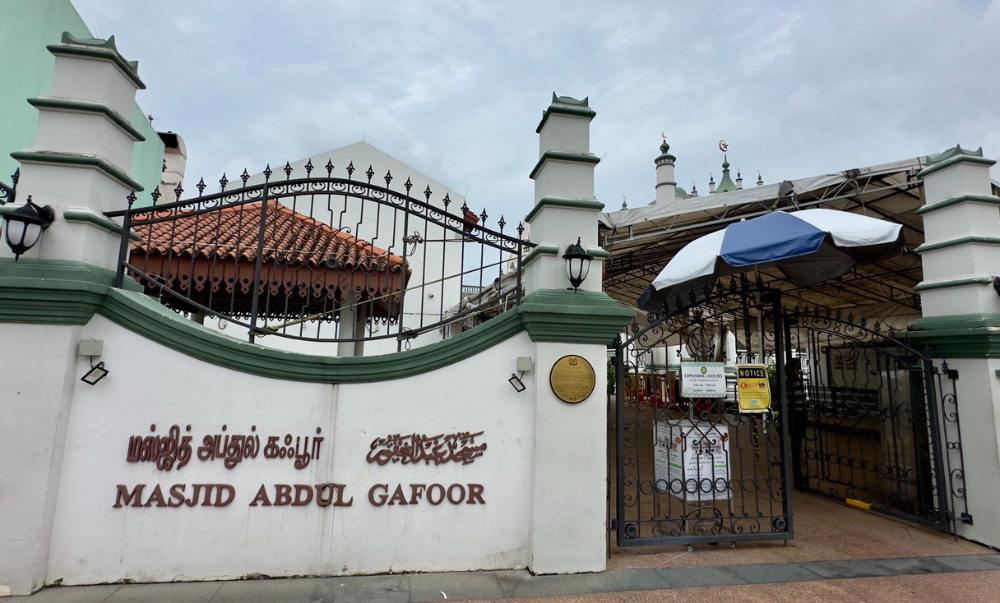 IMAGE: NG KAI
IMAGE: NG KAI
In 1881, the Dunlop Street Mosque Wakaf (Endowment) was established, and Shaik Abdul Gafoor bin Shaik Hyder (a Tamil Muslim), the chief clerk in law firm Khory & Brydges, was one of two appointed trustees.
As a trustee of the mosque, Abdul Gafoor obtained permission to build shophouses surrounding the mosque. In 1887, eight shophouses and nine sheds were erected, followed by another set of shophouses in 1903. Today, some of these structures on Dunlop Street and Mayo Street still exist and belong to the mosque.
With the income generated from the surrounding properties, construction on a new brick mosque commenced in 1907. By 1910, the old mosque (Dunlop Street Mosque) was no longer in use for religious activities. Upon Abdul Gafoor's passing in 1919, the mosque was renamed Abdul Gafoor Mosque in his honour.
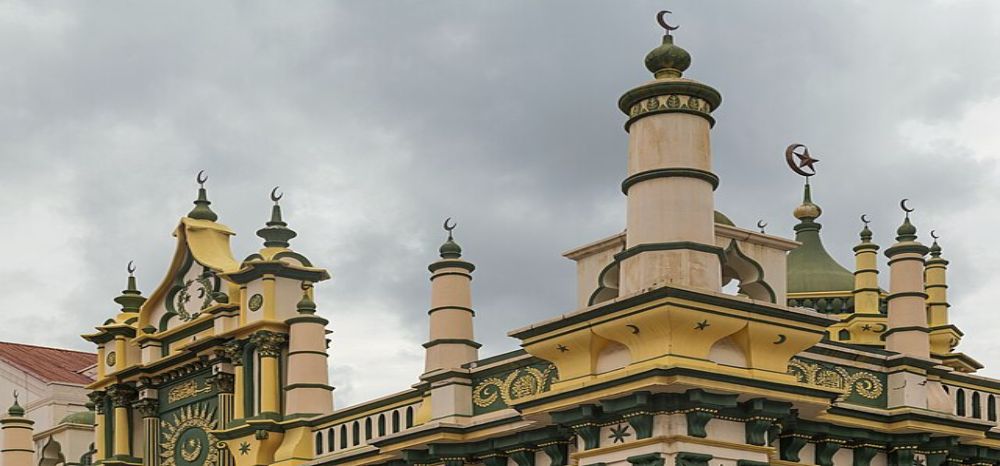 IMAGE: WIKIMEDIA COMMONS/@MARCIN KONSEK
IMAGE: WIKIMEDIA COMMONS/@MARCIN KONSEK
Starting from 2000, the mosque underwent a multi-million restoration. It involved the reinforcement of the building's foundation and the conversion of the basement into an air-conditioned prayer space.
Additionally, four minarets (slender towers, usually part of a mosque) with mini-domes, originally part of the mosque's architectural design but lost over time, were reinstated at the corners of the rooftop. The mosque was also painted in a fresh coat of green and yellow paint.
After reopening on 16 May 2003, the mosque can now accommodate up to 4,000 worshippers, a majority of whom are Tamil-speaking Indian Muslims.
Presently, the Abdul Gafoor Mosque is under the management of the Islamic Religious Council of Singapore (Majlis Ugama Islam Singapura, MUIS). It remains a vital centre for the Tamil Muslim community, and provides religious classes in Tamil.
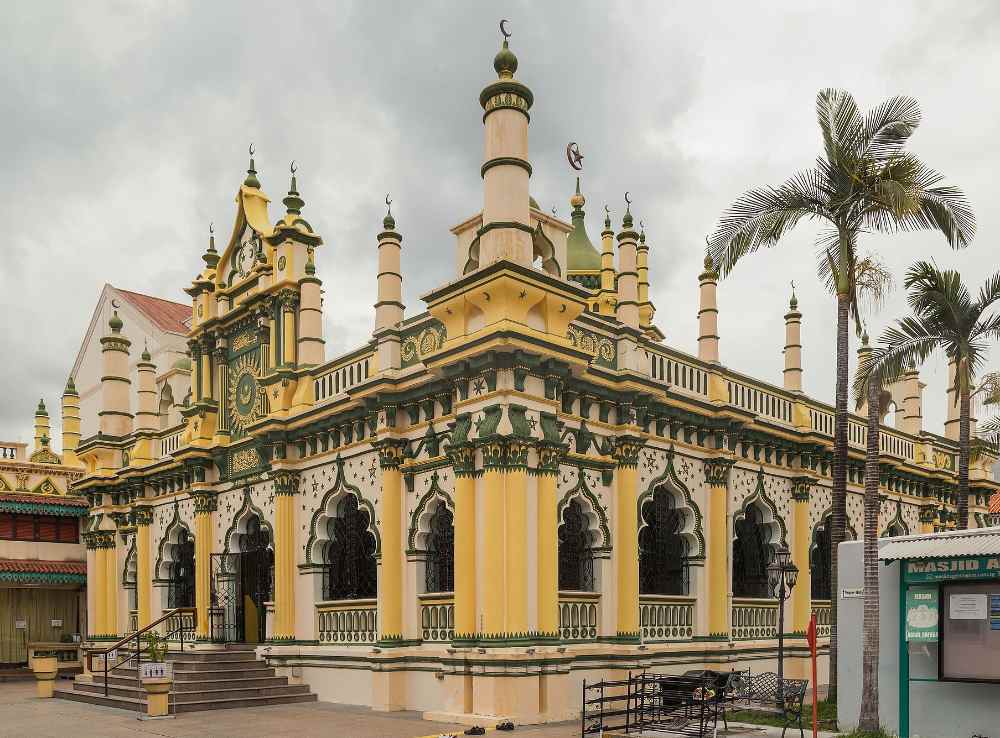 IMAGE: WIKIMEDIA COMMONS/@MARCIN KONSEK
IMAGE: WIKIMEDIA COMMONS/@MARCIN KONSEK
📐 Design and architecture
The design of Abdul Gafoor Mosque is a stunning blend of Saracenic and Neoclassical elements. The main prayer hall's verandas showcase stunning cinquefoil (an ornamental design of five lobes arranged in a circle) arches with intricate mouldings, reflecting Saracenic design influences. They are contrasted against the many Neoclassical Corinthian and Doric pilasters (rectangular columns).
Crescent moon and star motifs - symbols usually associated with the Islamic faith - adorn the exterior walls, while minaret-like structures along the roof parapet are each topped with a mini ogee-shaped (onion-shaped) dome and crescent moon.
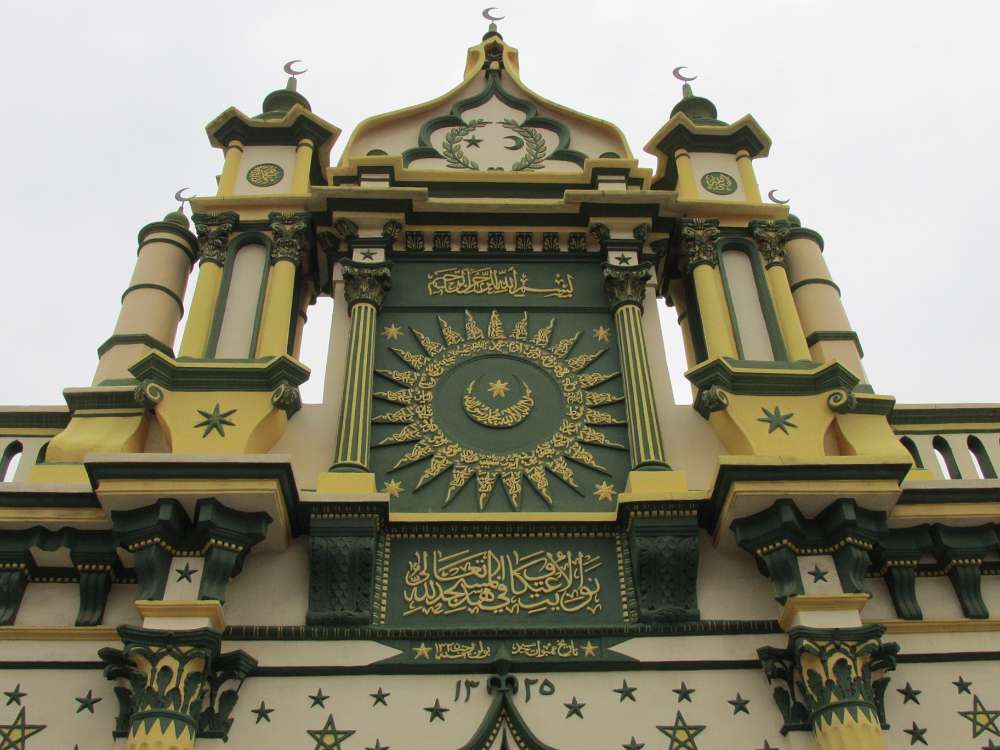 IMAGE: WIKIMEDIA COMMONS/@ORDERINCHAOS
IMAGE: WIKIMEDIA COMMONS/@ORDERINCHAOS
Above the main entrance is an elaborately decorated sunburst (a design consisting of rays or "beams" radiating out from a central disk in the manner of sunbeams). It is bounded by two fluted (ridged) pilasters and crowned with an onion-shaped pediment (upper part of the front of a building). The sunburst is also embellished with Arabic calligraphy depicting the names of the 25 most well-known Islamic prophets, from Adam to Muhammad.
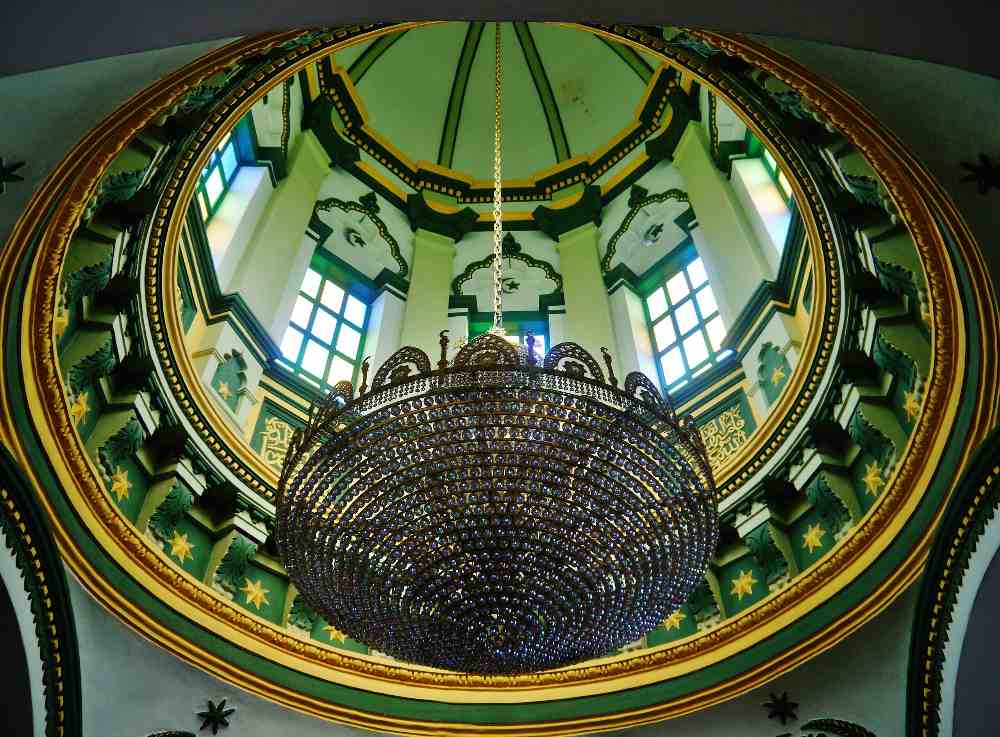 IMAGE: WIKIMEDIA COMMONS/@ZAIRON
IMAGE: WIKIMEDIA COMMONS/@ZAIRON
In the heart of the prayer hall stands a majestic cupola, a hexagonal-shaped tower rising from the roof deck. The cupola comprises three tiers: coloured glass panes decorate its base, then capitals (the tops of columns) and balustrades (railings comprising vertical posts) with bottleneck-shaped carvings in the middle tier. At the peak is an onion-shaped dome topped with a star and crescent moon at its apex, flanked by minarets at the corners.
Positioned directly above the prayer hall, the cupola is accessible via a staircase at the rear of the building, leading to a flat rooftop deck. The rooftop is encircled by a parapet adorned with at least 22 miniature minarets echoing the design of the onion domes, crescent moons and stars.
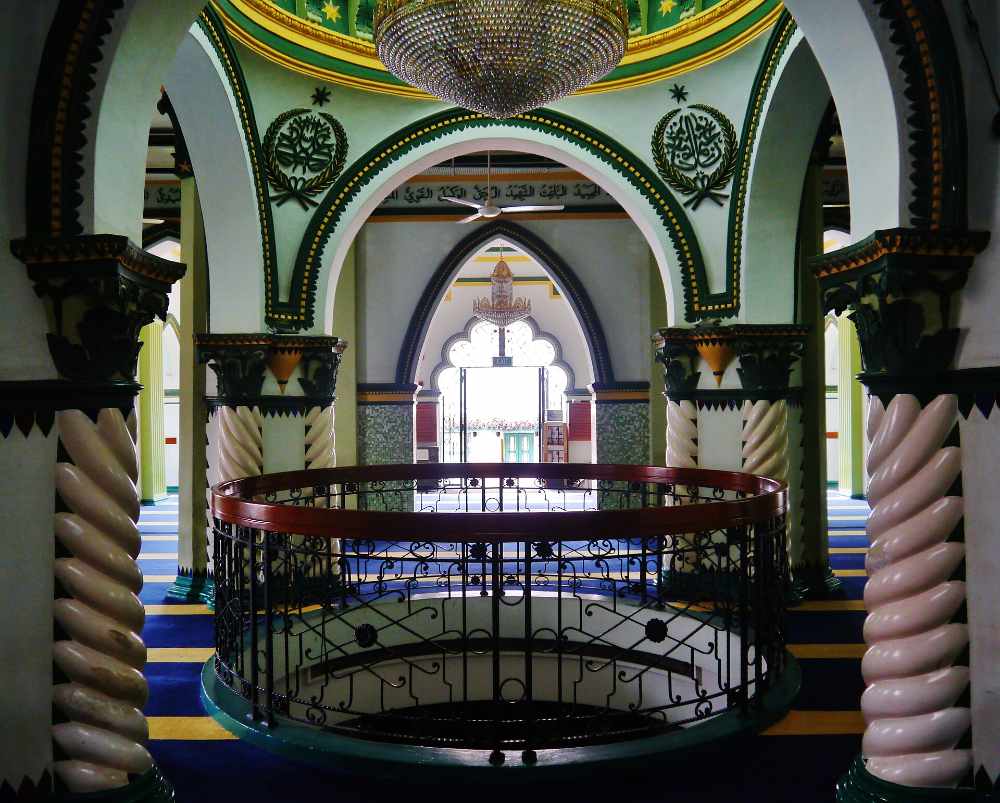 The main prayer hall of Abdul Gafoor Mosque. | IMAGE: WIKIMEDIA COMMONS/@ZAIRON
The main prayer hall of Abdul Gafoor Mosque. | IMAGE: WIKIMEDIA COMMONS/@ZAIRON
Inside the prayer hall, a panel inscribed with a verse from the Quran hangs above the mihrab, a niche in the wall of a mosque that indicates the qibla (the direction of the Kaaba in Mecca towards which Muslims should face when praying).
In 1998, a forgotten basement beneath Abdul Gafoor Mosque was rediscovered. Mistaken for storage space, the mosque's committee had originally planned to expand the prayer hall to accommodate more worshippers. However, after the mosque's original building plans were found in the National Archives of Singapore, a roomy basement that was suitable for holding hundreds of worshippers was revealed. The spacious basement was then refurbished with air-conditioning to fit 600 worshippers; it increased the main prayer hall's total capacity to 1,200.
🕖 Opening hours
Regular visiting hours are daily from 5.30am to 7am, and 12pm to 9pm. However, only worshippers are allowed to enter the mosque.
🎟️ Admission
Entry is free. Find out more here.
For the latest updates on Wonderwall.sg, be sure to follow us on TikTok, Telegram, Instagram, and Facebook. If you have a story idea for us, email us at [email protected].







